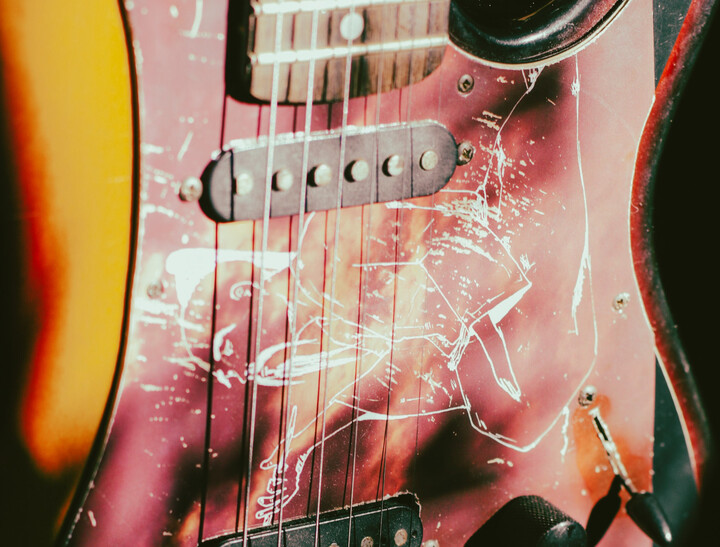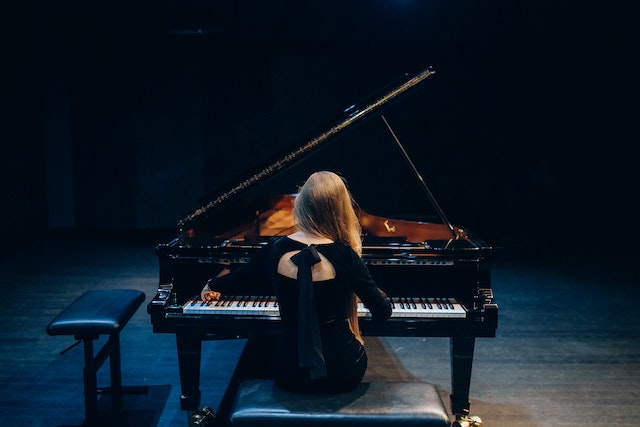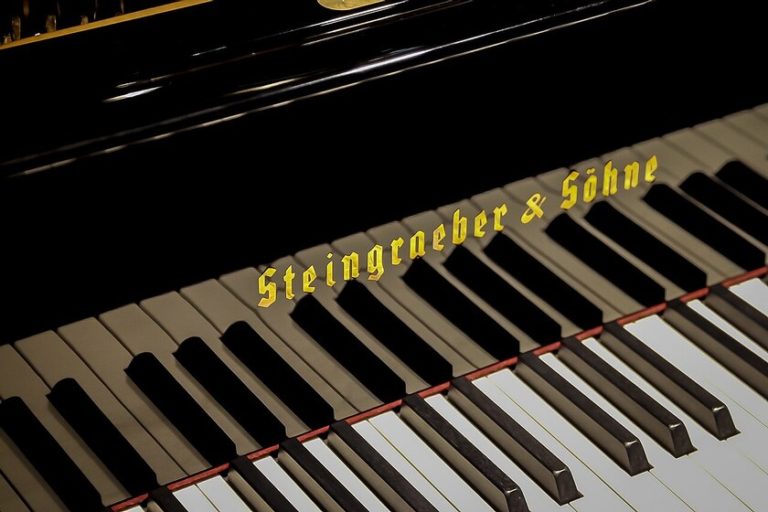Piano Types: Grand and Upright Compared
The world of pianos presents a spectrum of choices, from the expansive designs of grand pianos to the compact form of uprights. Both types have their merits and have inspired discussions among musicians and enthusiasts. Differences between the two primarily arise from their designs, tone production methods, and space requirements. Some believe that grand pianos provide better acoustics and touch, while others feel that contemporary upright pianos can offer similar qualities.
Mechanical Distinctions
Grand Pianos: A grand piano’s horizontal design often brings to mind the majestic shape of a harp or wing, sprawling out and occupying a significant floor area. Grands come in various sizes, from the smaller baby grands to the full-size concert grands which can reach lengths of 9 feet or more.
Upright Pianos: Upright pianos, on the other hand, stand vertically, with their soundboard and strings running perpendicular to the floor. This design, while space-saving, also means that the hammers and action are oriented differently than in a grand.
Hammer and Action Mechanisms
Grand Piano Mechanism:
- Gravity-Assisted Action: In a grand piano, when a key is pressed, the hammer is thrown upwards towards the strings. After striking, the hammer falls back to its resting position mainly by gravity. This design ensures a faster response time since the hammer doesn’t rely heavily on springs to return to its original position.
- Repetition: This gravity-assisted mechanism also allows for quicker repetition. A skilled pianist can replay the same note on a grand almost immediately, which is crucial for fast passages in some pieces of music.
- Nuanced Control: The horizontal hammer mechanism gives pianists a high level of control over dynamics. The natural motion and weight of the hammer allow for subtle variations in volume and tone, which is why many professional pianists prefer grands for their expressivity.
Upright Piano Mechanism:
- Side-Striking Hammers: In an upright, the hammers strike the strings from the side. Once the hammer has struck a string, it is returned to its resting position mainly by springs rather than gravity. This design can lead to a slightly slower response time, especially when trying to replay the same note in rapid succession.
- Space Limitations: Due to its vertical configuration, the upright piano’s action is more compact. While modern engineering has done wonders to improve the action of uprights, some pianists believe that the mechanism in a grand offers a slightly more authentic feel.
- Damper Orientation: The dampers in an upright, which stop the strings from vibrating, work in a vertical motion. In a grand, they move horizontally. This difference can subtly influence the decay of sound after a note is played.
Tone and Touch: Assessing Quality
In the realm of pianos, the debate surrounding the tonal richness and sensitivity of grand versus upright models is both age-old and evolving. The characteristics attributed to each type are grounded in their design, mechanics, and recent technological strides.
Grand Pianos: Deep Tones and Sensitive Touch
Tonal Depth: Grand pianos are often associated with a resonant and full-bodied sound. This is, in part, due to their:
- Expansive Soundboard: The soundboard of a piano, essentially its acoustic amplifier, plays a crucial role in the instrument’s tonal quality. Grand pianos, particularly concert grands, have larger soundboards. This expansive surface allows for more resonance, which results in a deeper and more sonorous tone.
- Longer Strings: The horizontal design of grand pianos allows for the accommodation of longer strings, especially for the bass notes. Longer strings vibrate more freely, producing richer overtones and a wider tonal spectrum.
Touch Sensitivity: The mechanics of a grand piano’s action (the mechanism connecting the keys to the hammers) enable remarkable responsiveness:
- Gravity-Assisted Hammer Action: As previously discussed, the horizontal configuration allows the hammers to utilize gravity more effectively. This design provides pianists with a greater range of dynamics – from pianissimo to fortissimo – and facilitates faster key repetition.
- Nuanced Control: The touch in grand pianos, especially in high-end models, allows for detailed expression, making it possible for players to convey intricate musical nuances. This becomes especially crucial in demanding classical compositions where subtle variations in touch can convey profound emotions.
Upright Pianos: Technological Advancements and Evolving Qualities
While traditionally seen as the more practical and less expressive alternative, upright pianos have seen significant advancements:
- Soundboard Innovations: Modern uprights have benefited from innovations in soundboard crafting, with some designs optimizing the shape, bracing, and materials to enhance resonance.
- Advanced Action Design: The vertical action of uprights has been the subject of considerable engineering focus. Modern designs offer improved touch responsiveness and a feel that approaches that of grands.
- String Length and Arrangement: While uprights cannot match the string length of grands due to their design constraints, technological advances in string manufacturing and arrangement have allowed for better tonal clarity and richness.
- Compact Yet Powerful: Some high-end upright pianos, equipped with these advancements, are now capable of producing a sound that rivals many grand pianos. Brands like Yamaha, Kawai, and Steinway & Sons have upright models that are lauded for their exceptional tonal quality and touch sensitivity.
While the grand piano continues to be revered for its iconic design and undisputed capacity for expressiveness, it’s essential to acknowledge the leaps and bounds in upright piano technology. The once-clear demarcation in quality is becoming increasingly blurred. This evolution challenges the traditional views of superiority and offers musicians a wider array of choices to find the instrument that aligns with their needs, preferences, and circumstances.
Considering Space and Price
Space and cost are crucial factors when comparing grand and upright pianos. Grands, with their larger size, occupy more space and typically come at a higher price. They are commonly found in concert settings, studios, and spacious residences.
In contrast, the compact design of upright pianos makes them suitable for homes, educational institutions, and smaller studios. Financially, quality uprights are often more budget-friendly than grands, making them an attractive option for many.
From a Musician’s Viewpoint: Preferences
Musicians, from seasoned professionals to budding beginners, often find themselves at the crossroads of choosing between grand and upright pianos. Their preferences, shaped by numerous factors, contribute to this complex landscape of choices.
Grand Pianos: The Allure of Range and Expressiveness
Tonal Range: Grand pianos, particularly the larger ones, possess an extended tonal range. This allows for:
- Rich Overtones: Due to longer string lengths and a more expansive soundboard, grands can produce a broader spectrum of harmonics, adding depth and richness to the sound.
- Diverse Dynamics: Grands enable players to traverse a vast dynamic range, from the softest whispers to the most thunderous fortissimos.
Professional Preference: Many professional pianists, especially those performing:
- In Concert Halls: The power and projection of a grand piano are ideally suited for larger venues. Famous pianists like Lang Lang or Martha Argerich often opt for concert grand pianos to ensure their performances reach every corner of a hall with clarity and resonance.
- Recording Studios: Sound engineers and recording artists might prefer grands for their tonal richness, which can be captured and modified more diversely in a studio setting.
- Expressiveness: Grands allow for intricate expressions, making them the instrument of choice for interpretations of classical pieces from composers like Chopin or Beethoven, where every nuance can convey a world of emotion.
Upright Pianos: Practicality Meets Quality
Space and Price Efficiency: Uprights, with their vertical design, are:
- Ideal for Smaller Spaces: Not every musician has the luxury of dedicating a vast space for a grand piano. Uprights fit comfortably into living rooms, bedrooms, and smaller studios.
- Budget-Friendly: While high-quality uprights can be expensive, they are generally more affordable than grands, making them accessible to a broader audience.
Preferred by Educators and Students:
- Teaching Studios: Many piano teachers find uprights more practical for their studios. They are compact, cost-effective, and provide sufficient quality for instruction purposes.
- Learning Phase: Students, especially beginners, might not require the extensive dynamic range of a grand. A good upright can provide an excellent learning platform.
Versatility in Genres: While classical music often demands the nuances that grands excel in, other genres might be more forgiving:
- Jazz and Pop: These genres, often characterized by rhythmic patterns and ensemble settings, might not always necessitate the profound tonal depth of grands. Famous musicians like Billy Joel or Elton John have showcased the potential of upright pianos in pop music.
- Amplification: In many modern settings, uprights can be amplified to achieve the required projection, reducing the gap between their natural sound and that of a grand.
Conclusion: Embracing Personal Choice
The grand versus upright piano discussion highlights the advancements in piano technology rather than a definitive superiority of one over the other. Each has its strengths, catering to different requirements and tastes.
Choosing between them depends on several factors: space, budget, musical style, touch and tonal preferences, and even aesthetic considerations. Both grands and uprights can offer exceptional quality depending on the brand and model.
Ultimately, the variety of options in the piano realm contributes to a dynamic musical community. The continuous dialogue encourages advancements and introduces fresh perspectives, fostering a broader understanding of this traditional instrument. Shared enthusiasm for piano music bridges differing views, allowing the discourse to persist, resonating with every note produced.








One Comment
Comments are closed.